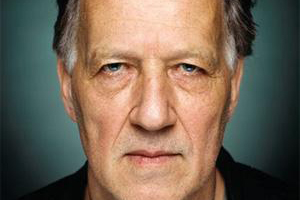
“We need adequate images, or we’ll go the way of the dinosaurs.”
Herzog has said this numerous times. I think it’s one of the most critical ideas of our time. It was true in the 70’s when he first said it. It’s more true today. In The Blue Light Project, I built my street artist character Rabbit around the inspiration of this idea. Herzog said what he said. I imagined someone taking him very seriously and responding with artistic action. With images. With an attempt at adequacy.
Here’s a review from Toro Magazine, by William Morrasuti, that senses the critical placement of that Herzogian idea in the novel.
***
The Blue Light Project, a timely, even prescient new novel by Timothy Taylor, opens with a warning: if human beings don’t develop adequate images, they’ll die out like dinosaurs. This notion, which the reader first encounters in an opening quote from Werner Herzog, turns into a leitmotif – and it culminates when one of the central characters, a street artist named Rabbit, stumbles into a movie theatre and hears these same words just as he’s undergoing a personal crisis.
“I’ll never forget the words,” Rabbit told Eve. “Herzog said: if you switch on television it’s just ridiculous and it’s destructive. It kills us. And talk shows will kill us. They kill our language. So we have to declare holy war against what we see every single day on television.”
Rabbit’s holy war is, ultimately, The Blue Light Project itself – a large scale art installation that blossoms phoenix-like out of the carnage (psychological and otherwise) of a grim, embattled city.
Each of the main characters is adrift. Thomas Pegg, a disgraced journalist, has lost everything to a plagiarism scandal. Eve Latour, a gold medal-winning Canadian Olympian, is haunted by a sense that her missing brother is still alive.
As the protagonists navigate personal crises, a larger calamity grips the city: a gunman carrying a bomb walks onto a reality TV show, kills several people and takes a group of children hostage. We later learn that the kidnapper, a former government interrogator, refers to himself as Mov – a nod to Movsar Barayev, the Chechen leader of the Moscow Theatre Crisis, a tragedy that took place ten years earlier.
The Blue Light Project is, on one hand, a serious novel that tackles big ideas. For instance, it’s no coincidence that the act of terrorism occurs at “Meme” Media – and, in conversation, Taylor acknowledged an intellectual debt to Rene Girard, the French academic, literary critic and philosopher who wrote about the role of mimetic desire and sacrifice in human evolution.
“As I was thinking about the function of sacrifice in our culture,” Taylor said. “I became increasingly certain that’s what is significant about reality TV. We allow people to step out of everyday life, elevate themselves significantly towards fame, and then let them go. And we tear them down. Someone has got to fail. And so if this is in fact lurking in the soul of human culture, then celebrity would be this superficial, half-real, safe version of it.”
Part of the charm of the novel is that, in concert with such serious considerations, the narrative hums along with an appealingly cinematic aesthetic. In fact, reading this book is like being immersed in a tense thriller yet with all the linguistic pleasures of a well-crafted novel. A case in point: the briefcase bomb that Mov carries onto the reality show KiddieFame comes equipped not only with a pressure trigger in its handle but also with a GPS detonator switch. Sharp, precise, pleasantly mechanistic details like these keep the pages turning. Rabbit has angst, but he doesn’t sit around brooding. Instead, he leaps across rooftops and slithers down elevator shafts like a Parkour-powered superhero. Taylor has constructed a vivid, active, mesomorphic novel, a book bristling with bloodthirsty mobs, ballistic knives, wafer phones, blue lasers, light-emitting bombs, towers to be climbed as high winds howl and tunnels to be run through in the dead of the night.
And then the action links back to ideas that relate to our most pressing cultural and political challenges. For instance, we find ourselves on a TV set that’s been shot up; a couple of corpses lie in the darkness, as do a group of terrorized children. The presiding villain, Mov, says:
“I believe you’re beginning to see how it’s done. The whole business. Fame and anti-fame. They both grind down at some point. Some solving value when appeasement is required, a sacrifice. And then we feed someone into the machine. We tear someone down and discard them and things return to normal. We run the video of the politician caught with the transvestite prostitute or the tape of the actor delivering a drunken, racist rant. And feel much better about ourselves, thank you very much. Those pictures of Abu Gharib, same thing. We didn’t need to approve of torture to walk away from those images feeling more righteous than we had the moment before.”
It’s easy to recommend The Blue Light Project, a literary meditation (on art, power, fame and sacrifice) with spring in its step.
***
Please note that book is now available:

